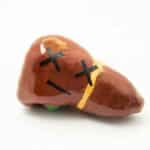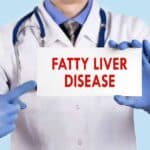- Causes Of Alcoholic Cirrhosis
- Stages Of Alcohol-Related Liver Disease
- Symptoms Of Alcoholic Cirrhosis
- Treatment For Alcoholic Cirrhosis
Drinking alcohol can cause a variety of toxic effects when you drink too much or too often. Alcoholic liver disease and alcoholic cirrhosis are two of the most severe of these potential long-term consequences.
Causes Of Alcoholic Cirrhosis
There are a variety of risk factors for cirrhosis, including:
- obesity
- certain immune system conditions
- infection with hepatitis B or hepatitis C
- drug misuse
- chronic alcohol abuse (alcoholic cirrhosis)
These different factors may cause liver injury alone, or in combination.
When you drink alcohol your liver breaks it down and cleanses it from your blood almost immediately, using enzymes to metabolize it first into acetaldehyde and then acetic acid which can be safely expelled from your body in your urine.
As a general rule, the liver can process around one standard drink each hour for men, and less for women. Drinking more than this amount puts toxic stress on the cells of your liver.
Stages Of Alcohol-Related Liver Disease
Although the liver is a tough and highly regenerative organ, any pattern of long-term excessive alcohol use (binge drinking or heavy drinking) can cause injury leading to cell death and scarring as the body moves through the various stages of liver disease.
These stages include:
Fatty Liver/Steatosis
Steatohepatitis is the earliest stage of alcohol-related liver disease and involves a buildup of fatty tissue around the organ. This likely does not cause significant symptoms or discomfort and can be reversed if you stop drinking.
Nonalcoholic fatty liver disease is linked to risk factors besides alcohol consumption, including obesity, high cholesterol, and type 2 diabetes. But this condition can contribute to alcohol-related chronic liver disease if you begin drinking heavily in the future.
Alcoholic Hepatitis
Chronic hepatitis refers to a prolonged inflammation of the liver, which can be caused by infections (viral hepatitis) or excessive alcohol consumption. This inflammation is a response to an ongoing liver injury and indicates that your liver cells are being stressed and destroyed.
About 1/3 of heavy drinkers develop alcoholic hepatitis of greater or lesser severity.
Alcoholic Cirrhosis
Liver cirrhosis is a late stage of liver disease in which the organ, after being severely stressed and injured over a long period of time, finally loses the ability to function properly as healthy liver tissue dies and is replaced by scar tissue, known as fibrosis.
Between 1/10 and 1/5 heavy drinkers develop cirrhosis, usually after at least a decade of prolonged alcohol abuse. And if this condition is not identified and treated effectively, it can progress into life-threatening or fatal end-stage liver failure.
Symptoms Of Alcoholic Cirrhosis
While symptoms may be minor during the earliest stages of cirrhosis, they will likely escalate as your liver damage continues.
Early symptoms of cirrhosis generally include:
- tiredness and fatigue
- decreased loss of appetite
- unexplained nausea and vomiting
- unusual weight loss
As the liver steadily loses the ability to function, later symptoms may include:
- jaundice, a yellowing of the skin and whites of the eyes
- muscle wasting
- symptoms of malnutrition
- bruising or bleeding more easily
- itching
- dark urine
- ascites, a buildup of fluid in the abdomen
- fluid buildup and bloating in the legs
- dangerously increased blood pressure in the liver (portal hypertension)
- red-colored palms
- spiderweb blood vessels developing on the skin
- loss of sex drive
Symptoms specific to one gender or the other include:
- missed periods in women
- breast enlargement in men (gynecomastia)
- shrinking, atrophied testicles in men
Hepatic encephalopathy may also occur, a condition marked by mental confusion, slurred speech, and memory dysfunction as toxins accumulate in the blood and brain.
Treatment For Alcoholic Cirrhosis
Treatment for alcoholic cirrhosis begins with total sobriety and abstinence from alcohol.
While the liver is a remarkable organ and can regenerate and restore liver function even after being heavily abused and injured, alcohol-related cirrhosis is, by definition, largely non-reversible.
The scar tissue resulting from heavy drinking over so many years simply cannot be restored or transformed back into healthy tissue.
But ending all alcohol intake can give your liver a chance to heal and reestablish at least some degree of its normal function, which may alleviate your symptoms.
Other treatment options include:
- nutritional supplements
- antiviral medications to resolve Chronic hepatitis B or hepatitis C infection, if present
- weight loss through diet and exercise
- treatment with blood pressure medications to reduce portal hypertension
If your liver continues to fail, a liver transplant from a healthy organ donor may offer you a second chance. But in order to be considered for a liver transplant, you will need to maintain complete and total abstinence from alcohol use for at least six months before the surgery and meet a variety of other important criteria as well.
Diagnosing Alcoholic Liver Disease
If you use alcohol heavily and have been experiencing the symptoms described here, it’s important to meet with a doctor and arrange for a proper diagnosis.
A diagnosis may include a liver biopsy, blood tests, and screening for liver cancer, another unfortunate risk associated with alcohol use disorder.
If you’re worried about uncontrolled alcohol use, contact us today to learn how we can help.
Sources
Written by
Northeast Addition Editorial Team
©2024 Northeast Addition Center | All Rights Reserved
This page does not provide medical advice.





